A reader sent me these photos and I’m mystified. Can you help?
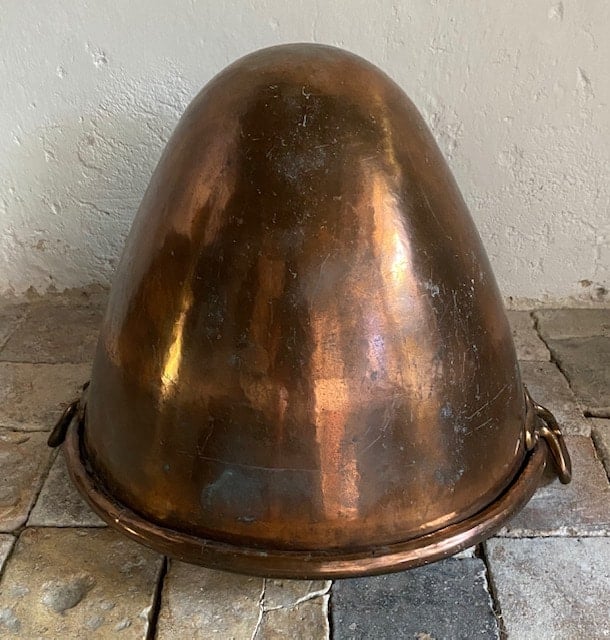
Writes reader Joanna,
I wonder if you could help identify this incredible piece I found at a brocante here near Bordeaux last week? It’s huge, must weigh at least 10 kilos (22 lbs), and unlined, so presumably for patisserie/chocolaterie/conserverie work? For scale, I’ve put it up against a lovely 30cm daubière I also found.
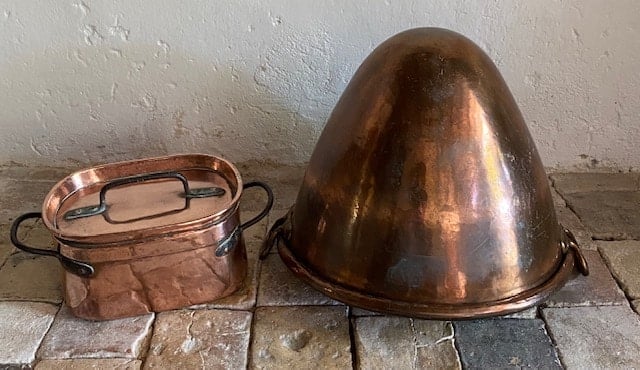
We both noticed the distinctive light line around the midsection, that looks as though the pan was set atop a narrower vessel.
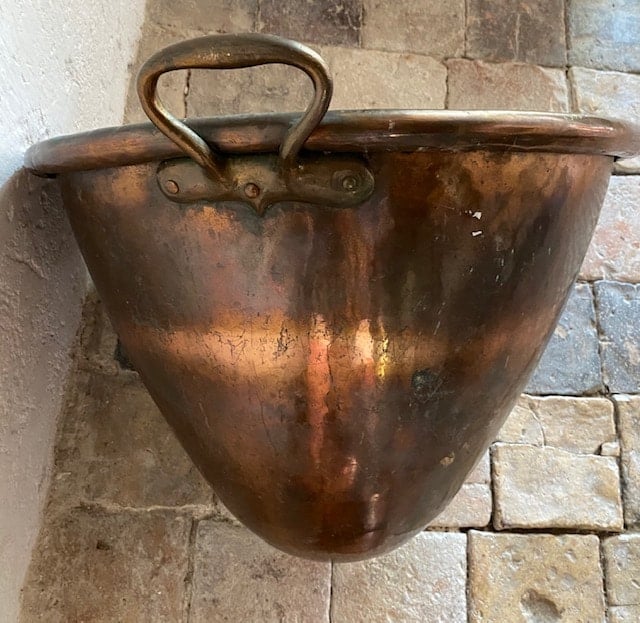
I’m wondering whether it sat inside something more industrial, like these giant bain maries in this jam makers’ site?
https://www.andresy-confitures.com/cooking-in-copper-pans-tradition-and-modernity/
But I can’t work out why it’s conical. Being near to Bordeaux I did wonder if it was to do with wine making, but I’ve found nothing so far.
To my eye, this pan is the love child of a flat-bottomed confiture basin and a deep round-bottomed cul de poule. I’ve been trying to think of the cooking purpose for this pointed shape — round-bottomed pans help with stirring and scraping, but a conical pan, especially one this large, heavy, and deep, does not seem convenient for that. Whatever solids are in this pan will seek to settle and concentrate at the bottom where there is not much room to stir them. Could the narrow base be intended to catch and collect unwanted debris of some kind — perhaps for boiling the skins off of fruit and collecting the skins below? Is there a wine-making process that seeks to separate fruit and skins in this way?
What do you think? Have any of you seen a piece like this before, and if so, do you know its purpose and provenance? Both Joanna and I would be grateful for the help!
Edited to add:
Here’s the additional photo of the interior from Jo.
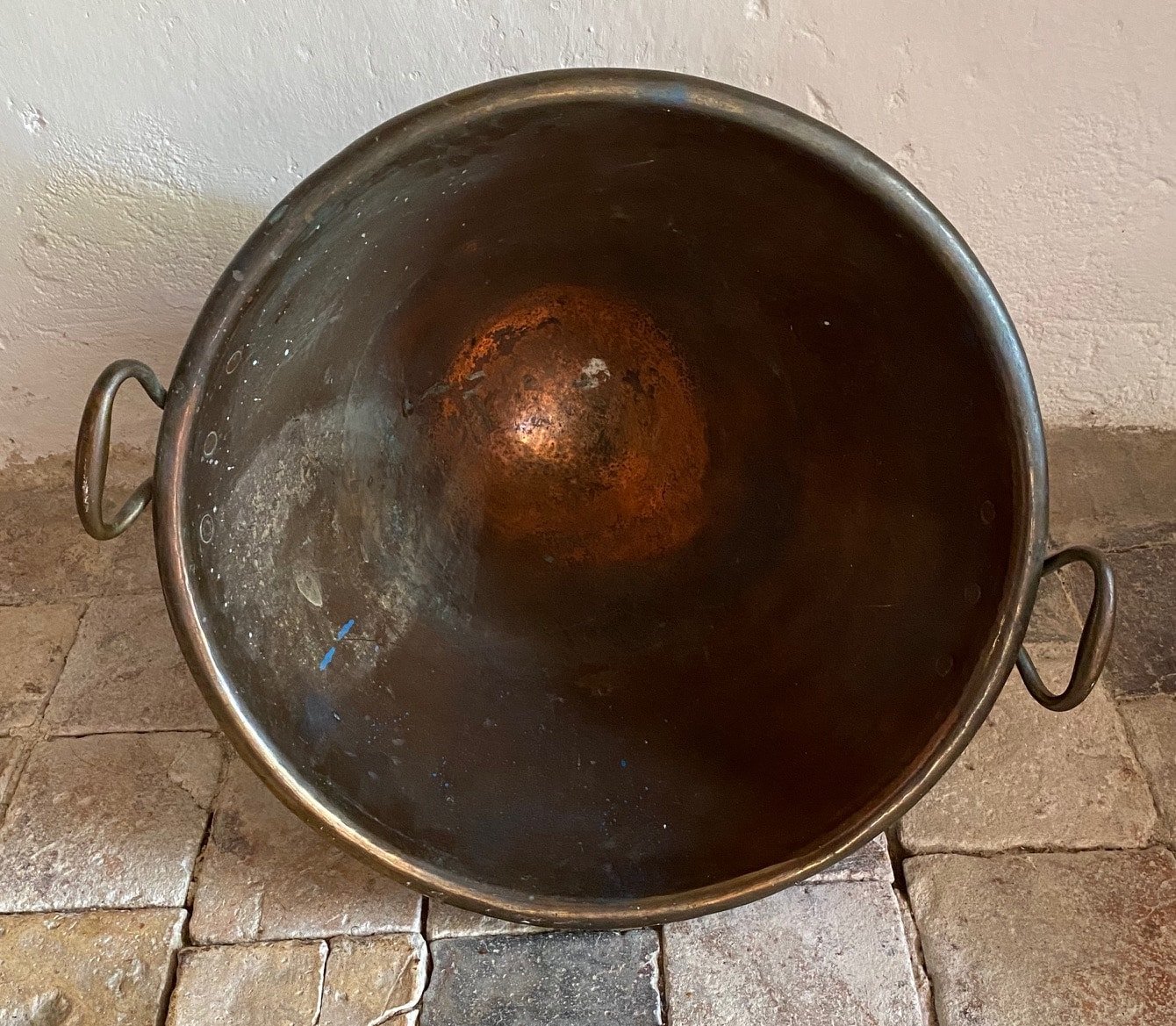
Val Maguire also sent over a photo of a commercial candy-making setup:
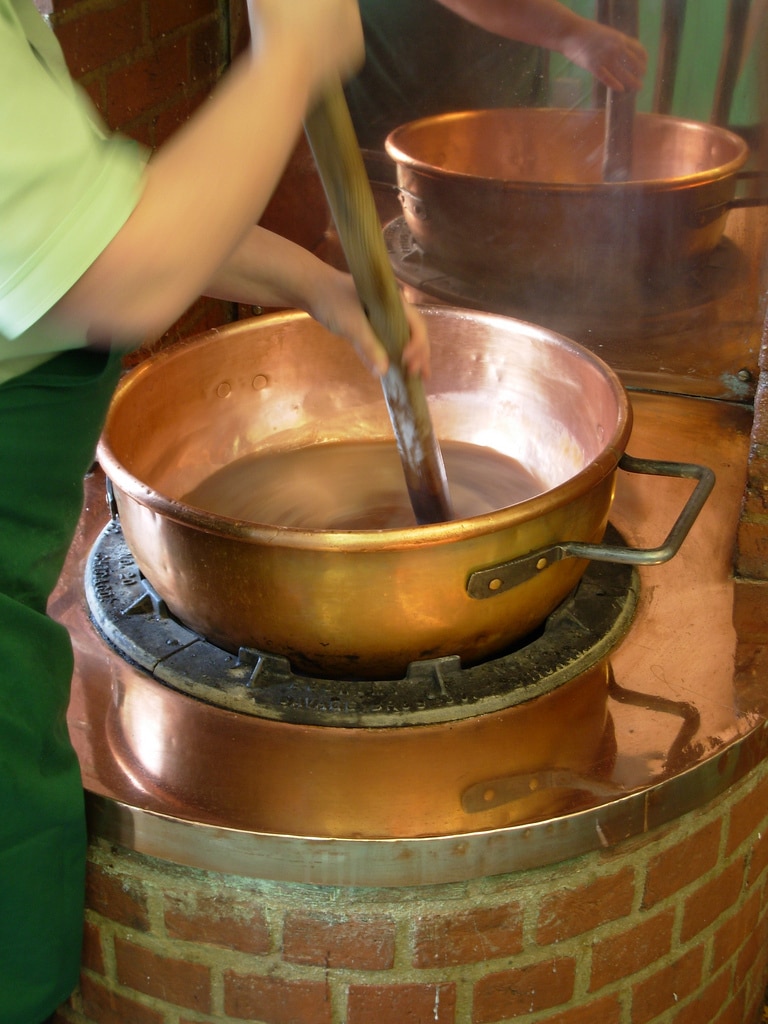
Photos contributed by Steve Nash (FrenchAntiquity on Etsy):
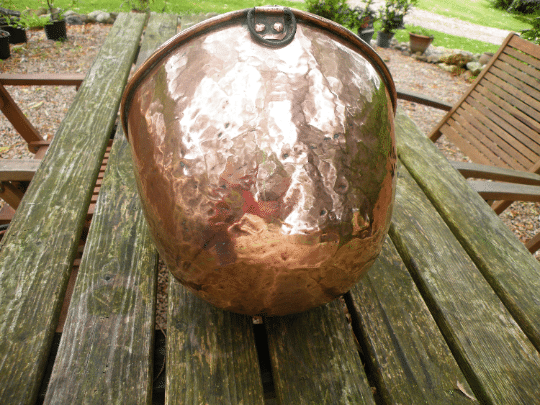
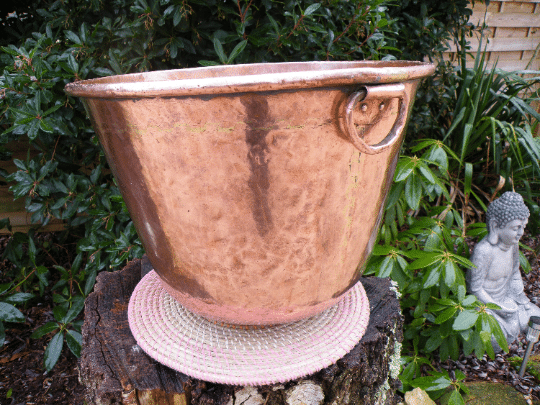
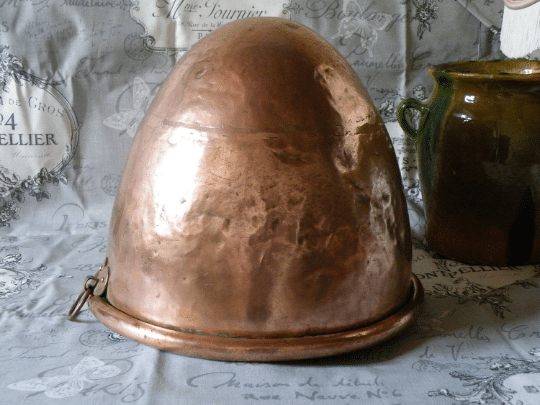

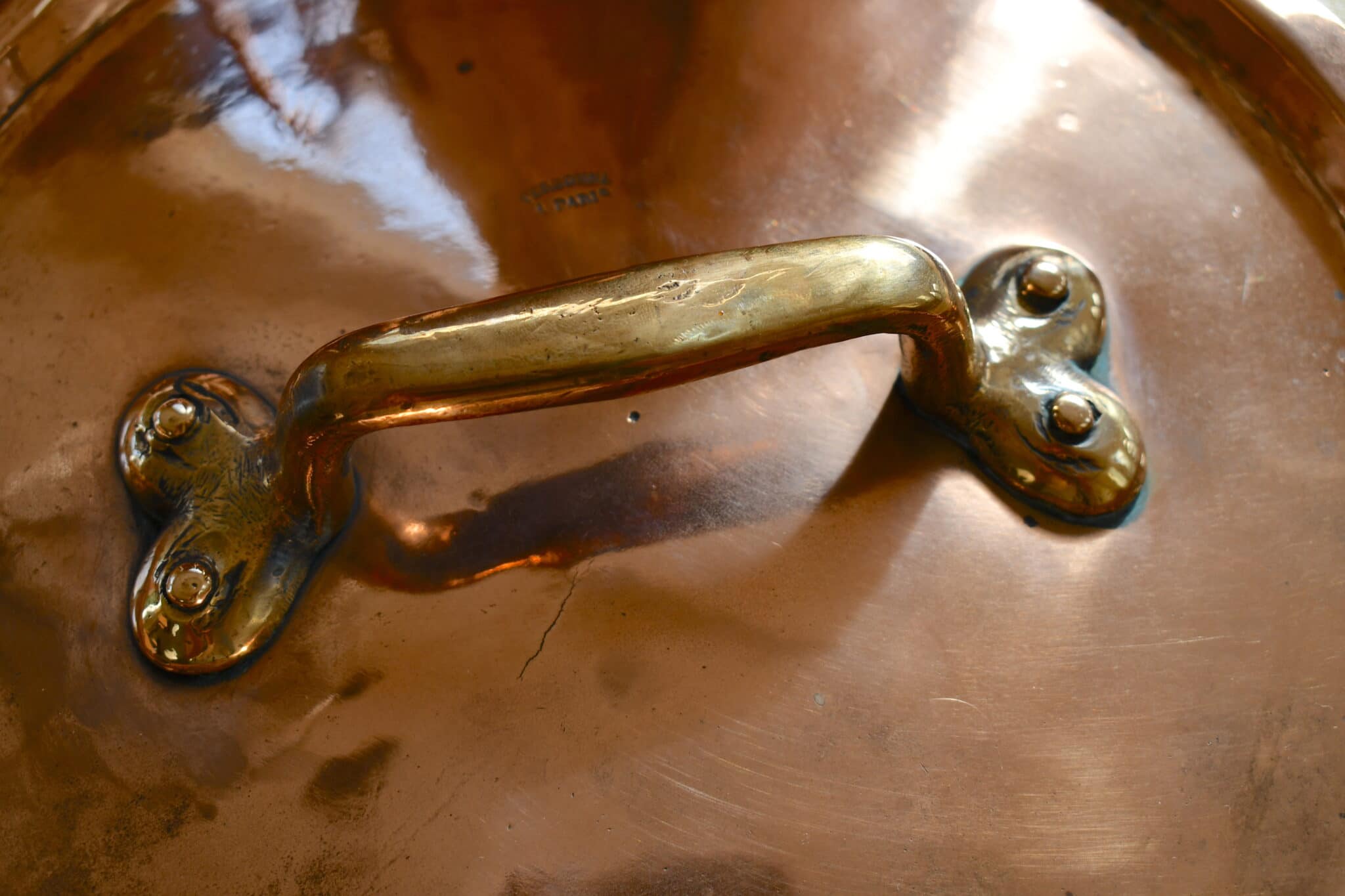

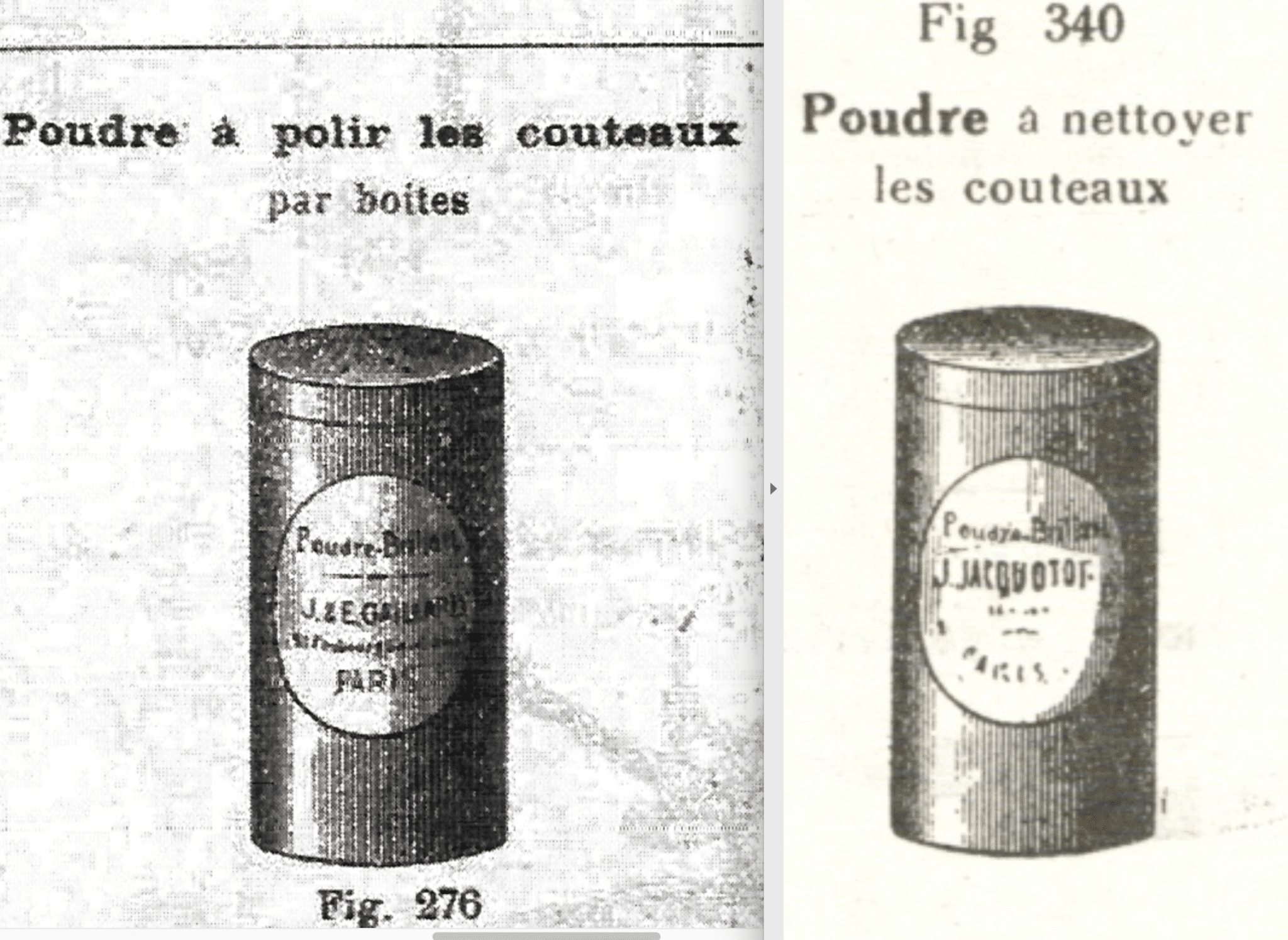
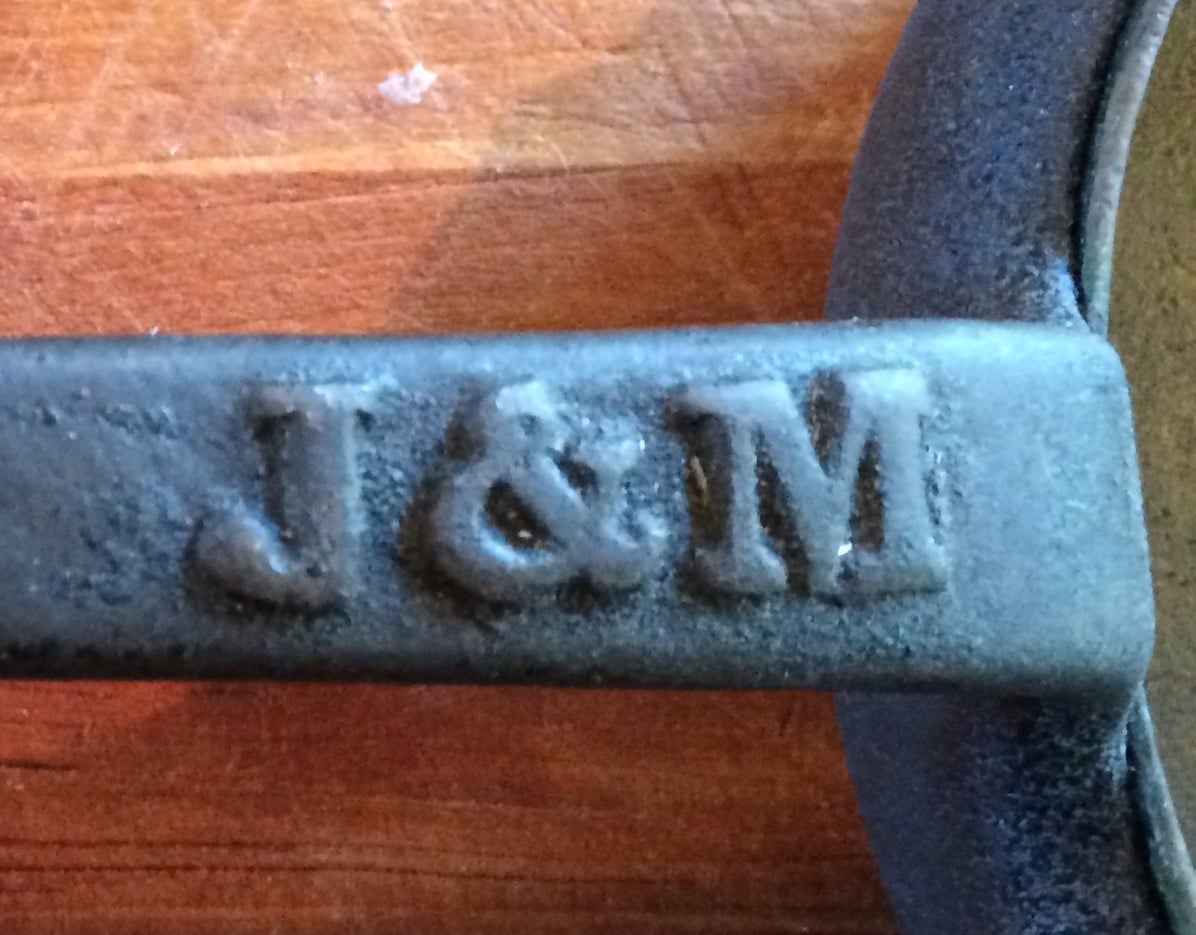
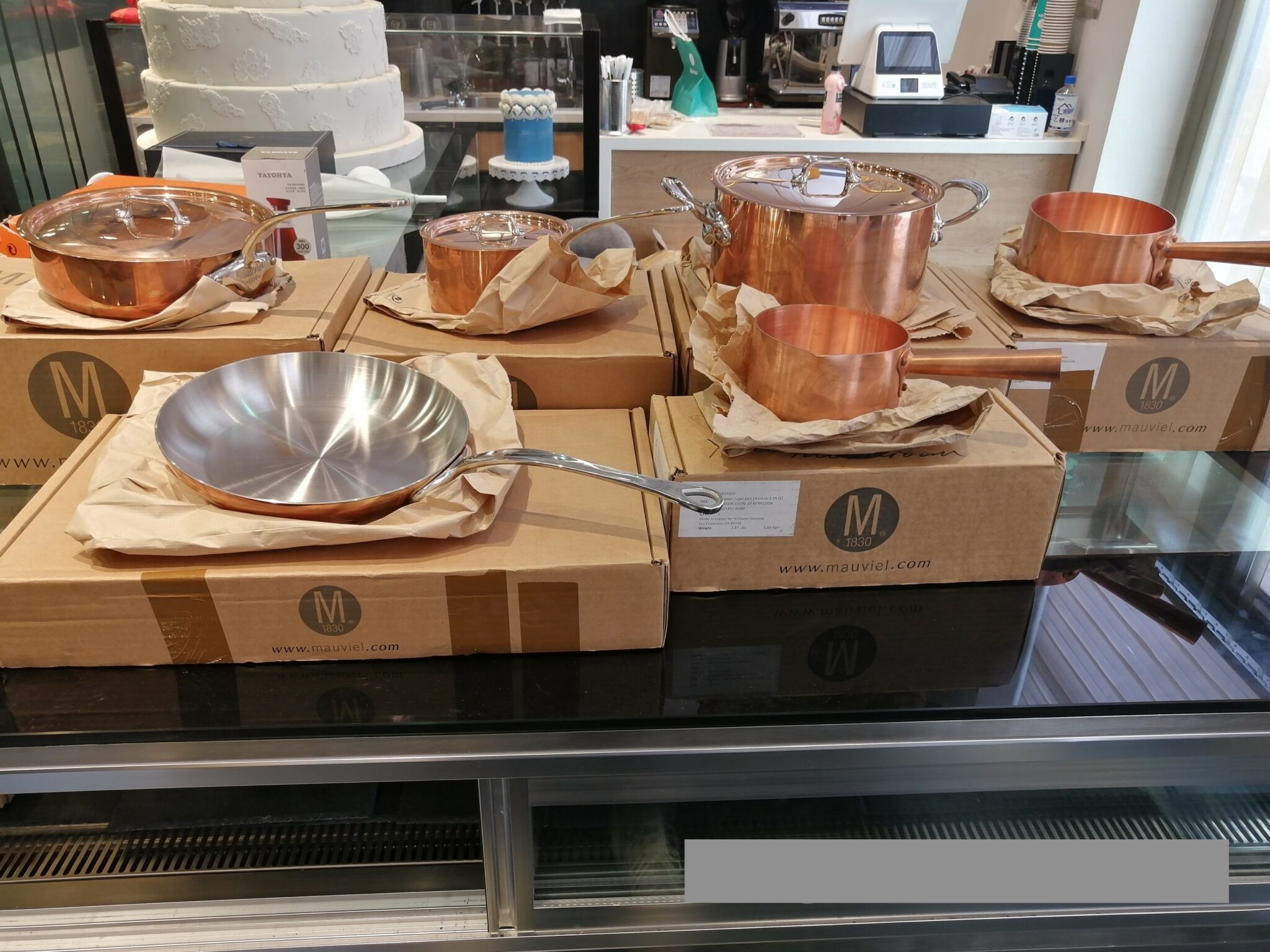
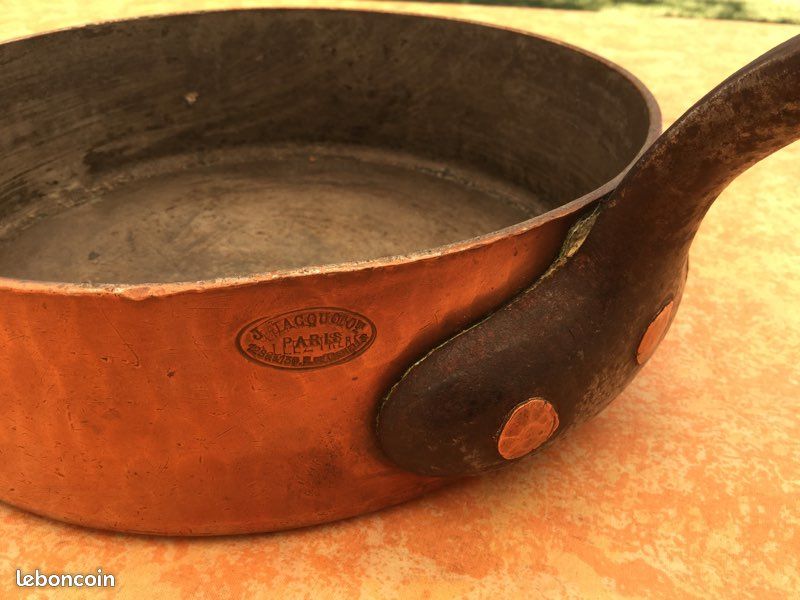
Never seen anything like this. Would like to know too.
Hello VFC, The ideas I have is chocolate melting or something to do with ice cream – the conical shape has a large surface area for either hot water or ice? It seems too big to be held on it’s own, so I would think it was placed into some apparatus. There is nothing in my Cuivres de Cuisine. Not much help I know! Love a puzzle!
Beautiful! This looks very much like part of a commercial set-up for making jam or candy. Refer to this picture: [VFC: I added the photo to the post.]
Thanks so much, Val! I’ve added that photo as well.
The large pot reminds me of my much smaller beating bowl for Zabaglione, which I can hold in one hand or use like a bain marie.
…. for huge amounts of hollandaise or bernaise sauce
Bravo, handtinner, convincing evidence!
Since the pan was found near Bordeaux, so close to the Atlantic, I wonder if it was used to cook seafood?
During my research I found photos of the oldest ceramic saucepans (approx. 15-20,000 years old). Some had almost the same conical shape and are said to have been suitable for stewing and steaming.
Is it bare copper on the inside? If so has to contain something high in sugar. I think grape juice would react even though bare copper is used by distilleries.
The typical Italian polenta pots are also made of untinned copper. Their shape is conical, steeper and taller than Windsor pans and have flat bottoms for use on the stove. Some also simmer risotto in these polenta pots. But none of that really fits Bordeaux or France.
Of all the suggestions, I am most likely to be convinced by preparations in a water bath with the help of this “in between” thing. The signs of wear on the outside wall indicate this. Careful stirring and not beating should be possible.
Copper always presents us with new riddles.
Sorry for writing so often.
The conical shape also reminds me a bit of a wok, although a wok is more like a hemisphere. The advantage of a wok is that it is heated all around by the flames. A particularly large area is thus heated. As already stated by other readers, this would also be the case with this conical pan, regardless of whether it was used in hot water or over an open flame. This would heat sensitive foods (fruit, chocolate, etc.) particularly evenly.
Now I shut up.
Hi, it’s Jo here, the finder of this mammoth mystery piece! What VFG said about sediment at the bottom makes sense, and I have an inside shot where you can see something acidic has brightened the copper at the very bottom of the cone. I’ll send it over.
Wow, you guys have some great ideas! I’ve added the additional photo from Jo — the bright copper at the bottom seems to be the result of some acidity. Fruit, perhaps? Macerating something?
One possibility not yet explored is that it is a bowl that fits a machine, I am sure I have seen a line drawing in an old catalogue of a huge whisk for commercial production of meringue driven by a crank handle. I just can’t remember where I saw it. The shape would allow such a device to operate with only a small quantity or completely filled.
Roger, a comparable machine is offered in the Gaillard catalog from 1956: N° 452 Machine à monteur les blancs.
Further specualtions:
The pan has the perfect shape of a parabola. There must be a reason. A container whose contents are to be kept warm in a water bath does not require a complicated shape. A simple cylindrical shape is sufficient, as we know it from the bain marie. However, if something has to be prepared in the bain marie by stirring or beating, the shape has to be adapted to this mechanical process. Usually a hemispherical shape is chosen for this.
However, I assume that this parabolic pan was hung in a stove with fire burning (gas, wood), as some photos suggest. I am not a mathematician, but I am wondering whether the parabola is an optimal compromise between filling capacity and heatable surface? At the same time, the shape must at least allow the contents to be stirred.
I already mentioned that some of the first ceramic cooking vessels were also in the shape of a parabola. Since in prehistoric times people cooked on an open fire or in embers, the vessels used for this had to have been suitable. Again, I can only assume that this shape fulfilled 3 conditions: high structural stability, maximum filling capacity and the largest possible heatable outer surface.
https://en.wikipedia.org/wiki/File:JomonPottery.JPG
Besides, the parabolic shape is an archetype in human history. Starting with the first primitive huts made of branches that were bent into the right shape and braided together at the top, which were then covered with fur, to stone houses made of dry stone walls to bridges and huge vaulted structures as we know them today.
Finally, I found an old video that shows the traditional artisanal production of NOUGAT. Here you can see a CONICAL copper pan for a brief moment (at approx. 0.40 sec).
https://youtu.be/WfXzIwPTugQ
This is a great example of crowd-sourcing a culinary investigation! Val suggested candy-making, Roger thought of the possibility of a mechanical mixing machine, and Martin found evidence of this shape of pan in use. Bravo to you! It makes sense to me that the parabolic shape was used with a mechanical mixer, as the steep sides would help guide the ingredients towards the center where the mixer would turn them. I am so impressed with your investigative skills! Thank you!
My guess is for making cheese
Thank you for solving this everyone, especially Martin, and for the one and only glimpse of another conical pan. Now comes the riddle of how to display it…
Hi Paul, cheese is made even on the small alpine pastures in much larger containers with flat bottoms. The diameter must be large so that the cheese can be carefully divided over and over again with the so-called “rake”. At the end, the pieces of cream cheese are taken out of the vats with large nets, poured into molds and then pressed a little. Most cheeses then have to mature for a long time.
I recommend you watch videos of the cheese making.
Manual and automated production of French nougat specialties
https://www.youtube.com/watch?v=n6dk7TaPyJM&feature=youtu.be
Jo, you’re welcome. I enjoyed it. But I have not the slightest idea how this giant pan could be presented.
Possibilities are endless – basketball hoop and polish the inside to create an impressive uplighter. Make a stand from wood or metal or maybe find a round stool where the seat could be removed, then you have a wine cooler, jardinaire or put a glass top on to make a table. I bet if you put your mobile phone in the bottom it would serve as a very efficient acoustic amplifier.
Hello V.F.C,
I have sold 4 very similar items in the past and have always considered them as patisserie elongated Cul de poule pans.
P.S,
I just love the total commitment that you have made in producing such an informative website for all to benefit from
Thank you, Steve! I have appended the four photos you sent to the post above. And thank you also for your kind words! It is so great when we can hear from experienced copper sellers to help answer questions — I really appreciate it.
amandes grillées… https://www.youtube.com/watch?v=gNbSXlvCUWU